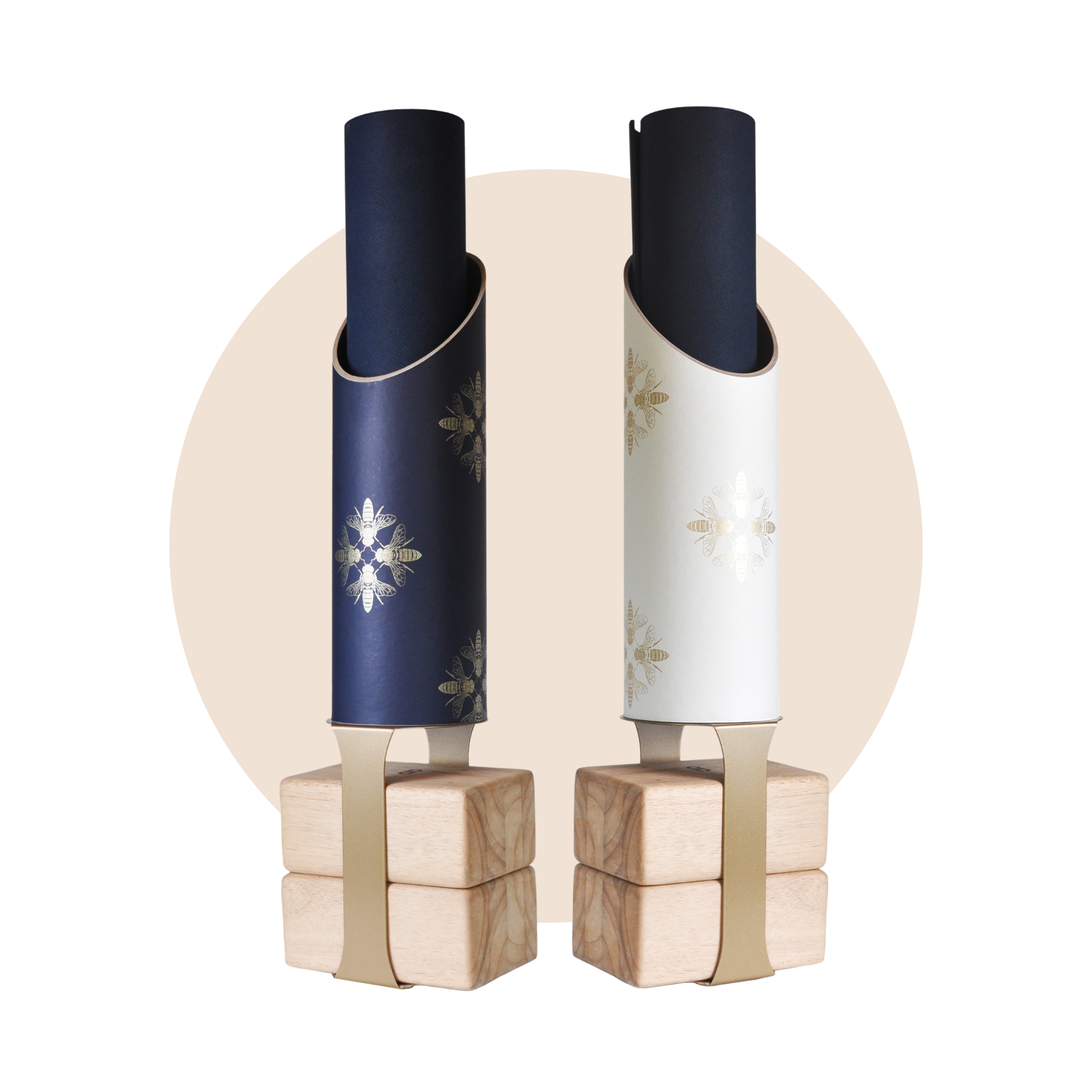Are you looking to transform your home or workplace into a space of optimal health and wellness and wondering where to begin? We recommend you start with a deep clean of your indoor air quality.
It may shock you to learn that most interior spaces are deeply polluted with harmful chemicals. In fact, back in 1986, the World Health Organization reported the average interior air to be, on average, two-to-five times more polluted than outside air, which led them to officially coin the term ‘sick building syndrome’.
Not much has changed to improve indoor air quality since, and to compound matters, most of us spend more than 90% of our lives indoors! You may be saying to yourself at this point, "I think I would know if my home or office was that polluted!" Yet, the tricky thing is, most of these harmful toxins are invisible, silently lurking in your yoga mat, furniture, or household items without your explicit knowledge.
Many of these harmful chemicals fall under the category of V.O.C.s (Volatile Organic Compounds), which are released into the air through a process called off-gassing. In this article, we explore what exactly V.O.C.s are, we call out the most common off-gassing plastics found in our daily lives, and we explore why these sneaky and prevalent chemicals pose a threat to our health.
Understanding VOCs
Volatile Organic Compounds are a group of chemicals that vaporize at room temperature, releasing gases into the surrounding environment. Surprisingly, there are more than 9,000 known V.O.C.s presently polluting our modern lives. These compounds are often found in plastic, engineered wood, house paint, adhesives, carpets, wallpaper, and countless other common household products. While some V.O.C.s have noticeable odors, think that "new car smell", others are odorless making them difficult to detect.
Popular Off-gassing Plastics + their Health Impacts
PVC (Polyvinyl Chloride): Nick-named the "Poison Plastic", this major contributor to V.O.C. emissions and is used in all kinds of interior building products such as wall siding, windows, flooring and wallpaper, to name a few common examples. PVC contains harmful additives like phthalates and lead, which can lead to respiratory issues, allergic reactions, and long-term health complications, including damage to the liver, kidneys, and central nervous system. The harmful effects of off-gassing PVC are magnified with increased temperatures, so think twice about storing that yoga mat in the hot car!
TPE (Thermoplastic Elastomers): TPE (Thermoplastic Elastomers): TPE materials, commonly found in yoga mats, can emit V.O.C.s, especially when they are newly manufactured. In addition to yoga mats, keep an eye out for TPE in other everyday products such as exercise bands, resistance tubes, children's toys, kitchen utensils, and food storage containers. Prolonged exposure to TPE off-gassing may cause headaches, dizziness, eye and throat irritation, and respiratory problems leading to symptoms such as coughing, wheezing, shortness of breath, and asthma attacks.
EVA (Ethylene Vinyl Acetate): You may easily identify this pollution perpetrator by its signature squishy texture. You will find EVA in foam blocks, exercise mats, and children's puzzle mats and even the insole of your tennis shoes. EVA can release V.O.C.s, resulting in similar health issues as TPE, including respiratory irritation and allergic reactions, causing skin rashes, itching, redness, and discomfort.
Synthetic Fibers/Fabrics: Many synthetic fabrics, such as polyester and nylon, are known to emit V.O.C.s via off-gassing. Plastic fibers surround us everyday in the form of clothing, upholstery, window coverings, bedding and more. These airborne chemicals can cause skin irritation, respiratory distress, and even contribute to the development of allergies and asthma.
The Long-term Health Impacts of Plastic Off-Gassing
In addition to triggering short-term, aggravating maladies such as headaches, dizziness, nausea, respiratory issues and allergic reactions, exposure to V.O.C.s from off-gassing plastics can have serious negative, long-term effects on your health, including:
-
Neurological Impacts: Some V.O.C.s have been linked to neurological disorders and cognitive impairments, impacting memory, concentration, and overall brain function.
-
Hormonal + Endocrine Impacts: Continuous exposure to V.O.C.s, especially from off-gassing plastics, has been associated with an increased risk of hormonal and endocrine disruptions, which can then lead to organ damage and cancer.
Tap into your Power to Choose Healthier Alternatives:
To minimize your health risks associated with off-gassing plastics, consider these alternatives:
-
Natural + Biodegradable Materials: Opt for yoga mats made from natural rubber, cork, or organic cotton and/or hemp, which are free from harmful V.O.C.s and provide a healthier foundation for your practice.
-
Sustainable Furniture + Household Items: Look for furniture made from solid wood or composite wood that is certified NAF, or free of resins made from urea formaldehyde or phenol formaldehyde, which have the potential to off-gas after installation. Choose paints, adhesives, and carpets labeled as low to zero V.O.C. in an effort to reduce exposure in your home and workplace.
-
Organic Fabrics: Select your soft goods, the clothing, pillows, sheets, etc, carefully to avoid plastic fibers and added chemicals such as chlorine, bleach and fire retardants. Reach for luxurious and sustainable fabric alternatives such as linen, wool, silk, and organic cotton, hemp, or bamboo, which are free from harmful chemicals, minimize off-gassing and micro-plastic pollution.
Understanding VOCs and their harmful effects on our health is crucial for creating a safe and healthy lifestyle. By identifying off-gassing plastics and opting for healthier alternatives whenever possible, we can minimize exposure to toxins and promote overall well-being. At Mache, we prioritize your health and offer a range of eco-friendly products that are free from harmful V.O.C.s, to ensure healthy indoor living. With our Wellness Design Studio, you can also work directly with our founder and wellness interior designer, Brienne Derosier, on integrating non-toxic interior design choices for your home and workplace.
Choose wisely so you may breathe easier. Together, let's make conscious choices to protect ourselves and the planet from the dangers of off-gassing plastics.
Explore our collection of VOC-free yoga props and storage for a healthier practice and home environment.




















